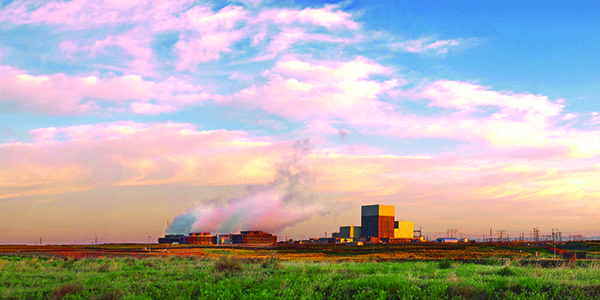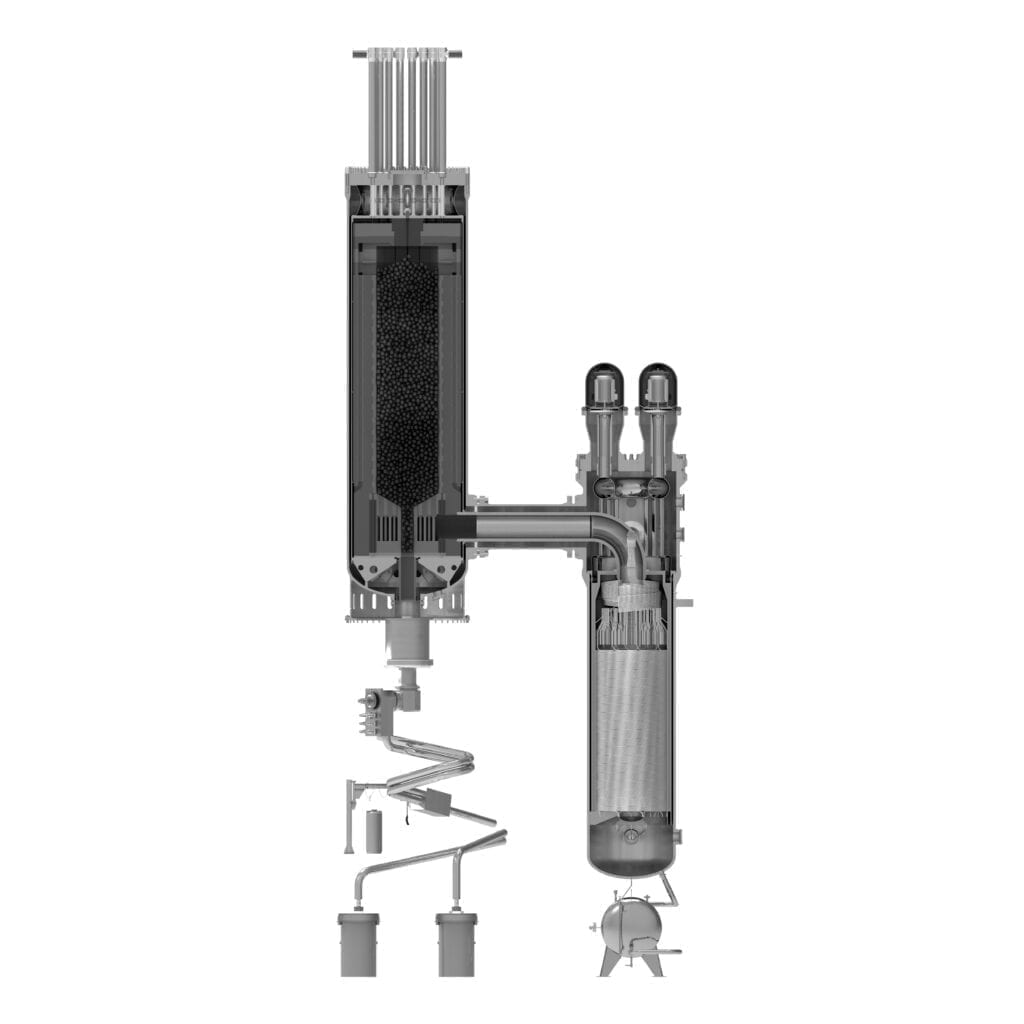Puget Sound Energy Commits $10M to Nuclear Power Feasibility Work, X-energy SMR Technology a Leading Contender for Project
Energy Northwest, a Washington state public power joint operating agency, announced an agreement with Bellevue-based Puget Sound Energy (PSE), which it says will “accelerate the agency’s program examining the feasibility of developing and deploying a next-generation nuclear energy facility.”
The agreement, a $10 million investment by PSE in Energy Northwest’s new nuclear project feasibility phase, is expected to guide future participation and investment decisions. However, the collaboration does not obligate PSE to any future financial commitment, nor signify an ownership interest in a developed project.
Energy Northwest comprises 28 public power member utilities, serving more than 1.5 million customers. The agency owns and operates hydroelectric, solar, battery storage, wind, and the Northwest’s only nuclear power facility—the Columbia Generating Station. The Columbia station is a single-unit 1.2-GW nuclear plant (Figure 1) in Benton County, Washington, that began operations in 1984 and was recognized as a POWER Top Plant award winner in 2017. PSE, meanwhile, touts itself as Washington’s “largest and oldest utility,” supporting approximately 1.2 million electric customers and 900,000 natural gas customers in 10 counties over a 6,000-square-mile area.

Energy Northwest has been focused on maintaining and expanding its nuclear power capabilities for many years. In 2019, Energy Northwest commissioned a study, conducted by the San Francisco, California–based consulting group Energy + Environmental Economics (E3), as part of a multi-year effort to evaluate all of its options to meet Washington state’s mandate to produce 100% of its power from “clean” sources by 2045. Among the study’s key findings was that if new firm capacity was not built, achieving a region-wide 100% greenhouse gas (GHG) emission reduction compared to 1990 levels would result in a “marked increase” in costs. Researchers said deep decarbonization would be most economically achieved from extended operation of the Columbia Generating Station as well as with new small modular reactors (SMRs).
The Columbia reactor is currently licensed through Dec. 20, 2043. Energy Northwest could submit a subsequent license renewal application with the Nuclear Regulatory Commission, which could potentially extend the license for another 20 years.
Beyond its existing nuclear unit, Energy Northwest was also involved in the Carbon Free Power Project, a 720-MWe NuScale Power SMR facility that Utah Associated Municipal Power Systems (UAMPS) was planning to construct at an Idaho National Laboratory (INL) site in Idaho Falls, Idaho. Energy Northwest would have had the option to operate the plant for UAMPS, if construction had been completed. However, that project was terminated on Nov. 8 due to insufficient subscriptions for the power from the proposed plant. The new agreement between Energy Northwest and PSE will allow further work to develop a different SMR project in the Northwest.
“Energy Northwest is committed to developing clean energy resources capable of helping Washington state meet its climate and carbon reduction goals. As we de-carbonize the electric grid, it is increasingly evident new sources of carbon-free, reliable, and affordable electricity must be deployed—and advanced nuclear energy technology can play a vital role in this transition,” Energy Northwest CEO Bob Schuetz said in a statement issued on Jan. 10. “Energy Northwest’s partnership with Puget Sound Energy underscores our shared commitment to address the climate challenge and meet the region’s future clean energy needs with the help of new and innovative carbon-free nuclear energy technologies.”
“Our clean energy future depends on finding reliable resources that produce energy when customers need it without emitting greenhouse gases,” said Mary Kipp, president and CEO of PSE. “Advanced nuclear technology has the potential to be that resource. I’m excited to partner with Energy Northwest as part of our efforts to identify and secure reliable, cost-effective clean energy for our 1.2 million electric customers in the state of Washington.”
Energy Northwest said it has been exploring the viability of building a next-generation nuclear plant in central Washington for several years, and said the agency is “well-positioned to investigate and facilitate a potential project.” It said the financial commitment by PSE will “supplement the approximately $10 million contributed to date by Energy Northwest and supporting entities, including nearly $1 million in combined investment from 17 northwest public utilities.”
Energy Northwest said it has been investigating numerous emerging nuclear energy technologies for more than two years, arriving at the determination X-energy’s advanced SMR—known as the Xe-100—is “the design best tailored to the region’s specific needs.” In July 2023, Energy Northwest and X-energy announced the signing of a joint development agreement for up to 12 Xe-100 advanced SMRs in central Washington capable of generating up to 960 MW. Energy Northwest expects to bring the first Xe-100 module (Figure 2) online by 2030.

Each Xe-100 module can provide 80 MW of full-time electricity or 200 MW of high-temperature steam. X-energy says its innovative and simplified modular design is road-shippable and intended to drive scalability, accelerate construction timelines, and create more predictable and manageable construction costs.
“The Xe-100 high-temperature gas-cooled reactor technology can power a broad range of applications through its high-temperature steam output that can address the needs of large regional electricity providers as well as industrial manufacturing systems,” the company said. In May 2023, Dow Inc. selected its UCC Seadrift Operations manufacturing site on the Texas Gulf Coast for X-energy’s first deployment of the Xe-100 as part of the U.S. Department of Energy’s (DOE’s) Advanced Reactor Demonstration Program (ARDP). X-energy was awarded $1.2 billion from the DOE in 2021 under the ARDP in federal cost-shared funding to develop, license, build, and demonstrate an operational advanced reactor and fuel fabrication facility by the end of the decade.
Concerning the project in central Washington, Energy Northwest said the ongoing analysis of project structures, schedules, and overall viability will inform future project investments and ultimately the prudency of a final investment decision.
—Aaron Larson is POWER’s executive editor (@POWERmagazine).